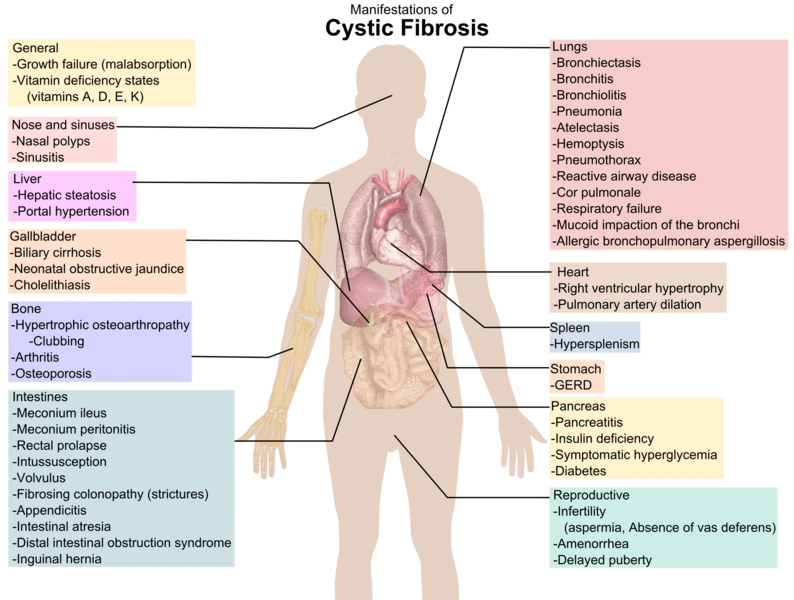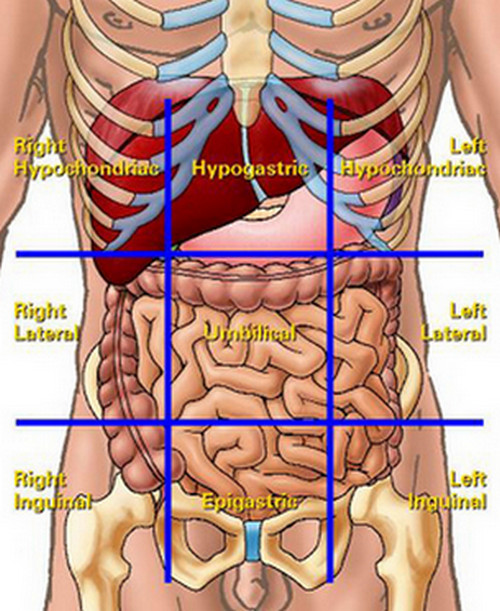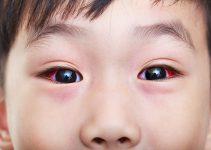What is Cystic Fibrosis?
Cystic fibrosis is a disease inherited from parents wherein it affects many organs because of the glands that secretes mucus and sweat. This is only applicable to patients who inherited this disease from both parents who have defective fibrosis genes but the parents are not necessarily affected with the disease.
Mucus is an essential part of the linings in all tissues. It keeps the organ moist, slippery and has a watery substance. In the digestive system, it helps in the peristalsis. Once there is not enough mucus secretion, it will then dry it can cause infection and greater consequences to the problem. In patients with cystic fibrosis, the mucus secretions are thick and affect organs like pancreas, liver, intestine, the sex organs and sinuses.
Usually cystic fibrosis affects the digestive tract. The sticky mucus obstructs the digestive system causing the insulin, which is secreted in the pancreas cannot reach to the intestine in order for digestion to happen. With that, patients will be malnourished and other digestive problems. In newborn, babies will have me conium ileus wherein the intestine will be blocked right after birth.
At present, the other terms for cystic fibrosis is CF, cystic fibrosis of the pancreas, fibrocystic disease of the pancreas, mucoviscidosis, and many others.
Cystic fibrosis genes and carrier life expectancy
Since cystic fibrosis is inherited, the CFTR gene is what causes the cystic fibrosis genes. This can be passed through the autosomal recessive pattern wherein both were copied from the parents in cell mutation. As a result, the patients then have clogged airways glands, because of the thick mucus secretions.
Cystic fibrosis is a life-shortening problem but experts say that there is no exact timeline wherein the person will only live. But if the problem is not addressed and the symptoms are not noted, then the patient will now live long because of the poor nutrition. According to statistics, there are about 4000 children in the United States that are born with this problem. and 30, 000 them acquired the condition. This affects either male or female and Latinos or Native Americans are more prone to having this problem.
What causes cystic fibrosis?
Picture 1: Cystic Fibrosis Inheritance Pattern

Cystic fibrosis is a genetic disease. The specific gene if is the CFTR wherein it makes the protein control the salt and water’s movement in and out of the cells but in patient with this problem, protein cannot control salt and water making the mucus thick and the sweat coming out of the body to be salty.
Cystic Fibrosis signs and symptoms
This disease affects the respiratory system, digestive, and reproductive system mainly. With that, there are different signs and symptoms that should be watched out for.
Picture 2: Cystic Fibrosis Manifestations

Respiratory Area
Infection in connection with the respiratory system is common in patients with cystic fibrosis. The mucus buildup is thick and it interfere the airway passage. Thus, the patient coughs and tried to expectorate to remove the mucus. Sometimes, hemoptysis can be seen when the patient tries to spit. Aside from that, the patient also suffers from hardcore respiratory problem like Pseudomonas which cannot be treated with standard and ordinary antibiotics. Complications like pneumothorax, bronchiectasis should be expected when the patient has problems likes bronchitis or pneumonia.
Reproductive Area
For a woman who has cystic fibrosis, they may be risk for impotency or they have difficulty in getting pregnant. With men on the other hand, they are infertile impotent because they don’t have any vas deferens which is responsible for delivering the sperm from the testis to the penis in preparation for conception.
Digestive Tract Area
The digestive system is the most common area which is affected by the problem. Since insulin cannot be transported to the intestine, digestion is not complete. Thus, diarrhea can happen and foul-smelling, grease looking stool can be observed. Stomach pain is also another sign and symptom to watch out as a result to gas or constipation.
Since children are the most affected patients, there is a marked poor growth and no or less weight gain. The necessary fats and protein cannot be absorbed to the body.
Complications like pancreatisis, rectal prolapse or the moving out of rectum because of diarrhea and/or frequent coughing, certain liver diseases, gall stones and diabetes can occur.
Other signs and symptoms
Dehydration can happen since when a person sweats, it becomes too salty. The body then loses a huge amount of sodium which is an essential electrolyte. Clubbing of fingers can also be seen because of the decrease in oxygen supply to the extremities. Low bone density which causes osteoporosis is also observed in patients with cystic fibrosis.
Cystic Fibrosis Treatment
Cystic fibrosis is one of the diseases to be checked in the newborn screening test. Before any treatment, diagnostic exams should be checked in order to have a definitive diagnosis of the problem. Aside from the newborn screening test, the patient is also checked for sweat test. Here, while the patient is sweating, a patch will be rubbed into the skin wherein an electrode may be used for a mild electrical current. After the sample is taken, this is then analyzed but for the diagnosis to be confirmed, this is almost always done twice.
Even before the baby is born, prenatal testing and even checking for cystic fibrosis carrier can also be done. Amniocentesis and chorionic villi sampling will be taken. A needed for amniocentesis will be inserted into the abnomnal wall going through the uterus. Then, a small amount of fluid from the amniotic sac will be taken. In the cystic fibrosis carrier testing, the parents will then be examined if their genes have defective CFTR and once affirmative, pregnancy planning as well as measures to be avoided will be discussed by the doctor.
Unfortunately, cystic fibrosis has no treatment. But to avoid further complications, health care professionals are controlling lung infections, prevent the blockage of mucus in the intestines, help attain the optimum nutrition a child needs and even loosen and effectively removed sticky mucus in the lungs or airways.
Medications may be given but it does not cure the problem. It helps in avoiding and treating infections like respiratory problems. With that, antibiotics will be given as well as anti-inflammatory drugs, mucus-thinning medications and even broncodilators. For those with Pseudomonas infection, higher antibiotic drugs may be given.
Cystic Fibrosis diet
The role of the dietician is to help patients achieve optimum health. So when a patient has cystic fibrosis, usually the diet is a high-calorie, high fat diet for the patient has a normal growth and development. Extra nutrients should be given in compensation for the malabsorption of nutrients in the body. Along with that, water is essential in the diet because patients are prone to dehydration because of salty sweat. However, as the person grows older, high in sugar foods should be avoided because cystic fibrosis can lead to diabetes.
Food supplements like those high in vitamins and minerals should be given because the minerals are not absorbed properly. These can be vitamins A, D, E, K which are known as the fat-soluble vitamins. Also, food supplements with minerals like calcium, iron, sodium and others should also be taken by the patient. A pancreatic enzyme supplement should also be given with meals and snacks to help the digestion of food.
References
http://ghr.nlm.nih.gov/condition/cystic-fibrosis
http://www.cff.org/LivingWithCF/StayingHealthy/
http://www.nlm.nih.gov/medlineplus/cysticfibrosis.html
http://www.medicinenet.com/cystic_fibrosis/article.htm#tocb


